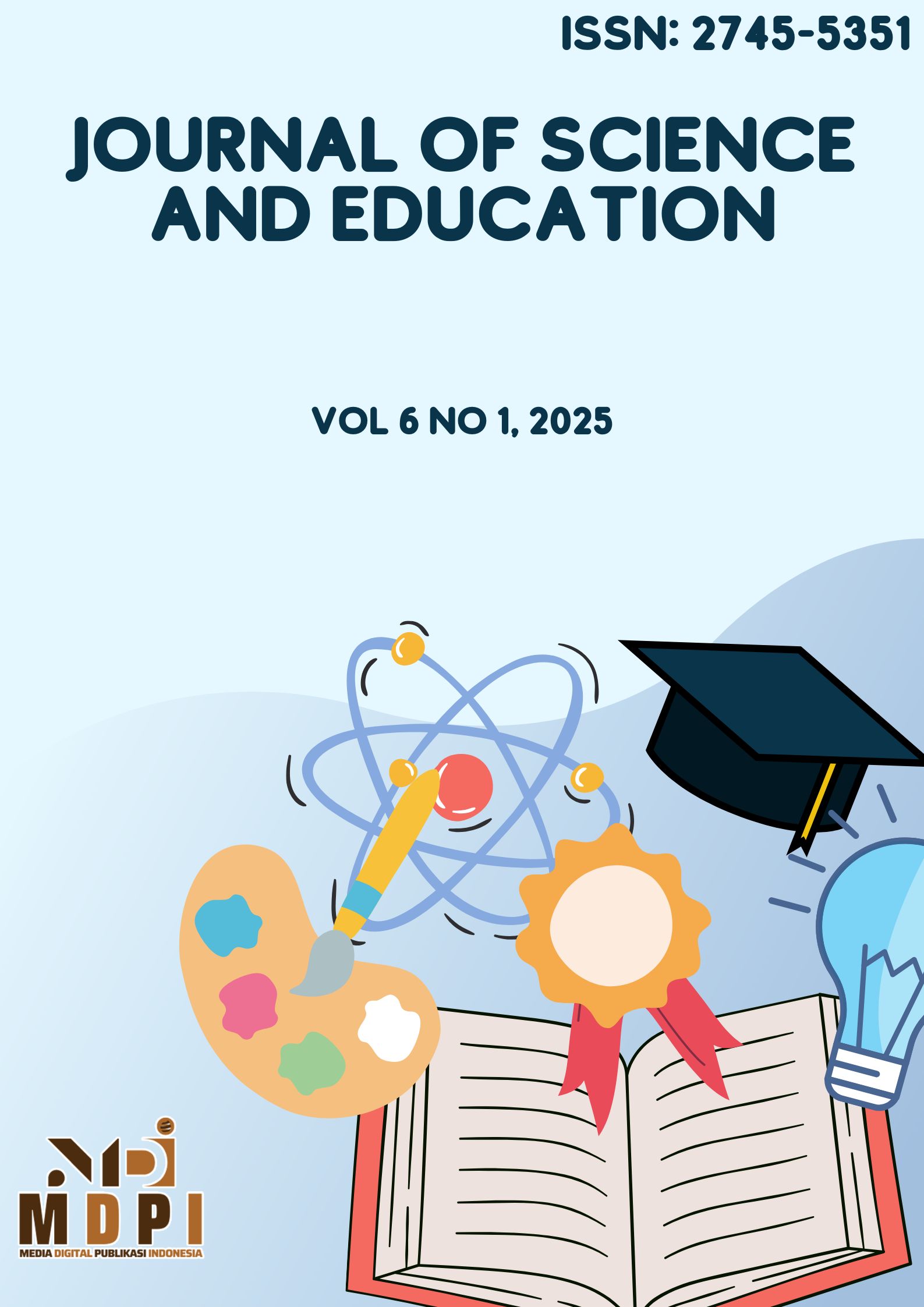A CIPP Evaluation of Indonesia’s Pelatnas Weightlifting for Paris 2024
DOI:
https://doi.org/10.58905/jse.v6i1.617Keywords:
Athletes, Coaching, National Training Center, OlympicsAbstract
This study aims to determine how the context of the program background, program achievements, and program analysis align with the objectives of the Weightlifting National Training Program for the 2024 Paris Olympic Games. How appropriate are the inputs regarding program planning and management, human resources, and program implementation guidelines established to support the implementation of the 2024 Olympic Weightlifting National Training Program? How is the implementation process of the program, monitoring system, and coaching system for the National Weightlifting Training Center for the 2024 Paris Olympics? What is the success rate of the implementation of the National Weightlifting Training Center for the 2024 Paris Olympics in achieving its objectives? The object of evaluation is the achievement of athletes participating in the National Weightlifting Training Center for the 2024 Paris Olympics. The research method used is an evaluative method with a qualitative and quantitative approach, conducted based on the results of interactions with subjects in the field through observation, interviews, questionnaires, and research of related documents based on evaluation criteria. Using the CIPP Model, the proposed statement items indicate that the National Weightlifting Training Center for the 2024 Paris Olympics is in the very good category. That all respondents who provided answers to the proposed statement items indicate that the National Weightlifting Training Center for the 2024 Paris Olympics is good.
Downloads
References
G. F. Madaus, M. S. Scriven, D. L. Stufflebeam, and D. L. Stufflebeam, “The CIPP model for program evaluation,” Eval. Model. Viewpoints Educ. Hum. Serv. Eval., pp. 117–141, 1983.
D. L. Stufflebeam and C. L. S. Coryn, Evaluation theory, models, and applications, vol. 50. John Wiley & Sons, 2014.
S. Sudirman, A. Hamzah, M. I. Hasanuddin, and A. Mappanyukki, “Evaluation of The Sports Coaching Program in South Sulawesi: an Evaluative Research CIPP Model Program,” Int. J. Disabil. Sport. Heal. Sci., 2024, doi: 10.33438/ijdshs.1504627.
U. Utomo, Y. Supriyati, and M. Akbar, “The Evaluation of Swimming Sports Coaching Programs for Disabled Athletes in The National Paralympic Committee,” J. Pendidik. Teor. Penelitian, dan Pengemb., vol. 5, pp. 544–553, 2020, doi: 10.17977/JPTPP.V5I4.13410.
F. Setyadi, M. Hidayatullah, and S. Purnama, “EVALUATION OF SPORTS AND HEALTH PHYSICAL EDUCATION PROGRAM IN SMA N 2 NGAWI USING THE CIPP EVALUATION MODEL (CONTEXT, INPUT, PROCESS, PRODUCT).,” Indones. Sport J., 2022, doi: 10.24114/isj.v4i2.37872.
E. Supriatna, D. Suryadi, M. Haetami, and G. F. Yosika, “Analysis Endurance Profile (Vo2max) of Women’s Volleyball Athletes: Yo-yo intermittent test level 1,” Indones. J. Phys. Educ. Sport Sci., vol. 3, no. 1, pp. 12–19, 2023.
C. Chaudhary, “Cultivating social values in youth: The positive impact of physical education and sport,” Int. J. Sport. Heal. Phys. Educ., 2024, doi: 10.33545/26647559.2024.v6.i1b.113.
J. Campillo-Sánchez, F. Borrego-Balsalobre, A. Díaz-Suárez, and V. Morales-Baños, “Sports and Sustainable Development: A Systematic Review of Their Contribution to the SDGs and Public Health,” Sustainability, 2025, doi: 10.3390/su17020562.
N. Zaras, A.-N. Stasinaki, P. Spiliopoulou, G. Arnaoutis, M. Hadjicharalambous, and G. Terzis, “Rate of Force Development, Muscle Architecture, and Performance in Elite Weightlifters.,” Int. J. Sports Physiol. Perform., pp. 1–8, 2020, doi: 10.1123/ijspp.2019-0974.
T. Suchomel, P. Comfort, and J. Lake, “Enhancing the Force-Velocity Profile of Athletes Using Weightlifting Derivatives,” Strength Cond. J., vol. 39, p. 10, 2017, doi: 10.1519/SSC.0000000000000275.
W. Hornsby, J. Gentles, C. MacDonald, S. Mizuguchi, M. Ramsey, and M. Stone, “Maximum Strength, Rate of Force Development, Jump Height, and Peak Power Alterations in Weightlifters across Five Months of Training,” Sports, vol. 5, 2017, doi: 10.3390/sports5040078.
A. Nuruhidin, F. Putra, O. I. Pamungkas, H. Ardiyanto, and D. Saputro, “An evaluation of powerlifting and weightlifting development program,” vol. 1, pp. 1–8, 2018, doi: 10.33292/PETIER.V1I1.19.
G. Mageau and R. Vallerand, “The coach–athlete relationship: a motivational model,” J. Sports Sci., vol. 21, pp. 883–904, 2003, doi: 10.1080/0264041031000140374.
S. Jowett, J. Adie, K. Bartholomew, S. Yang, H. Gustafsson, and A. López-Jiménez, “Motivational processes in the coach‐athlete relationship: A multi‐cultural self‐determination approach,” Psychol. Sport Exerc., vol. 32, p. 143, 2017, doi: 10.1016/j.psychsport.2017.06.004.
H. Santos et al., “Nutritional Strategies to Improve Post-exercise Recovery and Subsequent Exercise Performance: A Narrative Review.,” Sport. Med., 2025, doi: 10.1007/s40279-025-02213-6.
K. Beck, J. Thomson, R. Swift, and P. Von Hurst, “Role of nutrition in performance enhancement and postexercise recovery,” Open Access J. Sport. Med., vol. 6, pp. 259–267, 2015, doi: 10.2147/OAJSM.S33605.
D.-J. Hwang and H.-J. Yang, “Nutritional Strategies for Enhancing Performance and Training Adaptation in Weightlifters,” Int. J. Mol. Sci., vol. 26, 2024, doi: 10.3390/ijms26010240.
A. Li, “Real-Time Athlete Fatigue Monitoring Using Fuzzy Decision Support Systems,” Int. J. Comput. Intell. Syst., vol. 18, p. 23, 2025, doi: 10.1007/s44196-025-00732-8.
D. Seshadri et al., “Wearable sensors for monitoring the internal and external workload of the athlete,” NPJ Digit. Med., vol. 2, 2019, doi: 10.1038/s41746-019-0149-2.
S. Shewchuk, J. Wallace, and M. Seibold, “Evaluations of training programs to improve capacity in K*: a systematic scoping review of methods applied and outcomes assessed,” Humanit. Soc. Sci. Commun., vol. 10, pp. 1–14, 2023, doi: 10.1057/s41599-023-02403-5.
K. Sucharitha, “AN OVER VIEW ON EVALUATION OF TRAINING PROGRAM,” INTERANTIONAL J. Sci. Res. Eng. Manag., 2024, doi: 10.55041/ijsrem28529.
S. Iftikhar, Y.-M. Fu, S. Naureen, Y. Cao, and C. Zhou, “Cascading of teachers training at higher education in Pakistan: An evaluation of a faculty professional development program.,” Eval. Program Plann., vol. 94, p. 102130, 2022, doi: 10.1016/j.evalprogplan.2022.102130.
D. F. Battafarano et al., “2015 American College of Rheumatology workforce study: supply and demand projections of adult rheumatology workforce, 2015–2030,” Arthritis Care Res. (Hoboken)., vol. 70, no. 4, pp. 617–626, 2018.
T. Bompa and C. Buzzichelli, “Periodization Training for Sports,” 1999, [Online]. Available: https://consensus.app/papers/periodization-training-for-sports-bompa-buzzichelli/8c3ade614f5c564ca57e716f8aff64f8/
E. Muammar, “Stagnation of Achievements of Indonesian Athletes at The International Level,” J. Res. Soc. Sci. Econ. Manag., 2025, doi: 10.59141/jrssem.v4i9.813.
I. Harahap, “Kebijakan Pemerintah dalam Meningkatkan Prestasi Atlit Nasional,” vol. 1, pp. 189–198, 2018, doi: 10.36782/JEMI.V1I4.1825.
D. Procházka, K. Bočková, and N. Kazistay, “Impact of sports sponsorship on early career athlete performance: Czech case study,” J. Infrastructure, Policy Dev., 2024, doi: 10.24294/jipd.v8i12.9533.
C. George, C. Constantin, G. Gabriel, and E. S. Ion, “Theoretical Study of the Determinants of Weightlifting Success in a Postmodern Approach,” Sport. Bakış Spor ve Eğitim Bilim. Derg., 2025, doi: 10.70736/spjses.290.
K. A. Umam and I. Saripah, “Using the Context, Input, Process and Product (CIPP) Model in the Evaluation of Training Programs,” Int. J. Pedagog. Teach. Educ., 2018, doi: 10.20961/ijpte.v2i0.26086.
E. Aldapit and S. Suharjana, “CIPP evaluation model for the coaching program of running athletes,” Psychol. Eval. Technol. Educ. Res., 2019, doi: 10.33292/petier.v1i2.10.
M. Rahimzadeh, A. Emadzadeh, M. Hosseini, and R. Akrami, “Exploring Learners’ Viewpoint regarding Training Program of Health Care Providers Based on CIPP Model,” Futur. Med. Educ. J., vol. 9, pp. 3–10, 2019, doi: 10.22038/FMEJ.2019.37036.1245.
S. E. Susanto, S. Hardhienata, and W. Sunaryo, “Evaluation of the CIPP Model for Education and Training Program at the National Archives Indonesia (ANRI),” East Asian J. Multidiscip. Res., 2023, doi: 10.55927/eajmr.v2i7.5349.
Downloads
Published
How to Cite
Issue
Section
License
Copyright (c) 2025 Lucky Ramadhani, Ramdan Pelani, Yasep Setiakarnawijaya

This work is licensed under a Creative Commons Attribution-ShareAlike 4.0 International License.

















